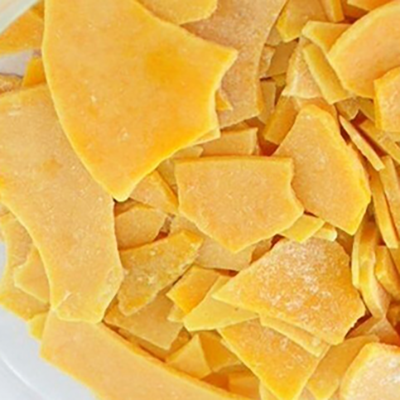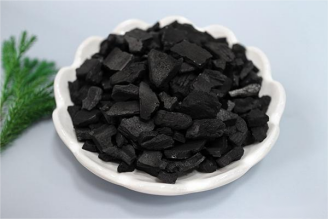
RELATED
 Sodium Hydrosulfide (NaSH)2024-06-03
Sodium Hydrosulfide (NaSH)2024-06-03 Wishing you peace and wellness on the Dragon Boat Festival.2025-05-30
Wishing you peace and wellness on the Dragon Boat Festival.2025-05-30 Introduction of food additive zinc sulfate2025-05-21
Introduction of food additive zinc sulfate2025-05-21 Soda flake, granular soda ash, solid soda ash are all called sodium hydroxide, what is the difference?2025-05-12
Soda flake, granular soda ash, solid soda ash are all called sodium hydroxide, what is the difference?2025-05-12 Differences in carbonization of coconut shell charcoal materials in different regions2025-04-22
Differences in carbonization of coconut shell charcoal materials in different regions2025-04-22
MESSAGE
Polyimide (English name Polyimide, referred to as PI) foam is a foam material made of polyimide resin raw material and blowing agent, foam stabilizer and other additives through polymerization foam reaction. PI foam has many kinds, density (5 ~ 400kg/m3), with design, insulation outstanding, especially with excellent resistance to high and low temperature (-250 ~ 450 ℃), radiation resistance, flame retardant The unique properties of PI foam are incomparable to traditional foam, such as low smoke emission, and no harmful gas release. Therefore, PI foam is a new type of material with great application value and development potential, and is increasingly used as a key material for aerospace, national defense, microelectronics and other high-tech fields such as heat insulation, vibration and noise reduction and insulation. At present, only a few countries in the world, such as the United States and Japan, can produce polyimide polymer materials, and their high-end products are basically not exported to China because of the special nature of application fields (mainly used in aerospace, ultra-high-speed aircraft manufacturing and other military fields), and their technology and products.
Main R&D institutions, manufacturers
Polyimide foam first appeared in 1966 and was produced by Dupont using polyamide acid solution coated with foaming agent. In the 1970s, NASA Langley Research Center and Unitika America cooperated to develop and research polyimide foam for spacecraft insulation and thermal insulation.
After half a century of research and development, research institutes and enterprises in the United States, Japan, China and other countries have certain stable performance of commercial products and practical applications, such as Boyd Corporation's Solimide PI foam, Monsanto's Skybond PI foam, Dow's Rohacell polymethacrylimide foam They have met the U.S. DOD-F24 688 military standard and have been designated by the U.S. Department of Defense as the thermal insulation material for naval ships, and have been widely used in civilian ships, such as luxury cruise ships, speedboats, and liquefied natural gas ships.
Domestic research and development institutions and manufacturers include Shanghai Synthetic Resin Research Institute, Changchun Institute of Applied Chemistry, Chinese Academy of Sciences, Tiansheng New Material (PI foam series), Ningbo Institute of Materials, Chinese Academy of Sciences (PI microfoam particles), etc.
Application areas
Aviation
The material used in aviation aircraft should be as light as possible on the basis of other properties to save fuel and increase the load capacity. A sponge-like, light PI foam material is resistant to fire up to 800°F, and even at that temperature, PI foam material only char and decompose, which can make the in-flight accidents reduced. The material also extends the life-saving time of aircraft passengers by 2-5 minutes if an accident is caused by an external fuel fire. Currently Boeing, Lockheed Martin, General Motors, Airbus, Dowell and other aviation giants are using PI foam extensively in the aircraft they manufacture. Not only large aircrafts, but also civil small aircrafts are widely used PI foam as sandwich material. Due to the excellent performance of PI foam, it has become an ideal foam material for aircraft and other aerospace vehicles.
Spaceflight
In space vehicles, such as the space shuttle, space station, Mars rover, moon module, due to its special operating environment, the materials on the components must not only withstand the high temperature brought about by the flight, but also have a light weight, flame retardant, sound absorption, shock absorption and other properties. To this end, NASA launched the High Speed Research Program to develop materials that could meet the needs of extreme environments, and the TEEK series of polyimide foams was born in this process. PI foams are used as cryogenic storage boxes, wave-transparent materials, airframe insulation systems, seats for aircraft, and can be made into honeycomb structural materials. The thermal insulation system prepared by PI foam-aluminum-PI foam can maintain good thermal insulation performance at -217℃ and 204℃ in supersonic flight environment.
Ships
At present, the U.S. Navy has used PI foam as heat and sound insulation material for all surface warships and submarines, and it is also widely used in civil ships, such as luxury cruise ships, speedboats and LNG ships. submarine hull and frame components requiring sound transmission loss treatment; - submarine hull and frame components requiring thermal and steam isolation treatment to prevent fogging; - insulation of cryogenic vessels.
Construction
Compared with other traditional foam materials, PI foam has better flame retardant performance, heat resistance, heat insulation, sound absorption performance, which makes it play an important role in the construction industry in places with special environments, such as ventilation ducts, pipe insulation, sound absorption and noise reduction, high temperature insulation, etc. It can play the role of thermal barrier, reduce the heat load of the environment, and can effectively prevent the occurrence of fire accidents.
Other
Tactical weapons, available in the bomb bay deceleration bearing plate, nozzle heat insulation sleeve, high insulation connector, firing bracket, warhead fuze insulation cap, tank fuel tank high pressure insulation, etc. Communication equipment, used in relay skeleton and shell, gyroscope base, signal transmitter insulation base, flexible circuit board, etc.
The development of high-end manufacturing industry can not be separated from the support of new materials industry. Over the years, although China's manufacturing industry has developed rapidly, it relies on the rough processing of materials and the assembly of end products. The transformation and upgrading of China's manufacturing industry is bound to require the development of new materials and the manufacture of core components as a prerequisite guarantee. New materials will provide the core competitiveness for the high-end of China's manufacturing industry.
Please give us a message





